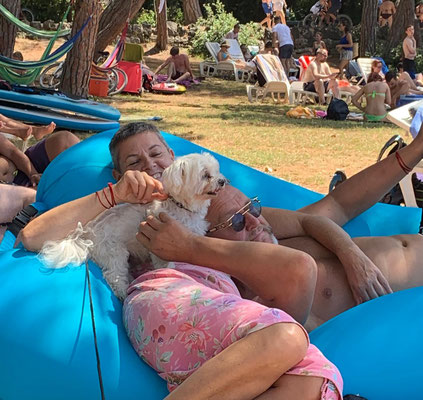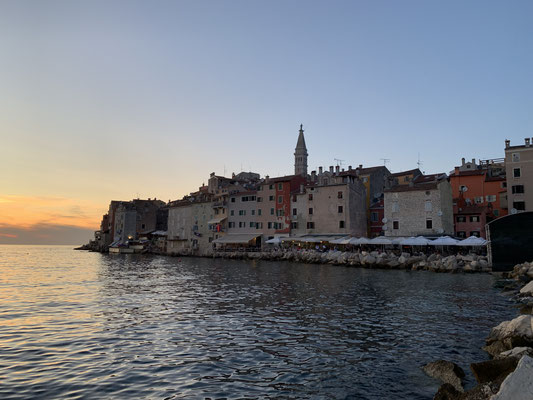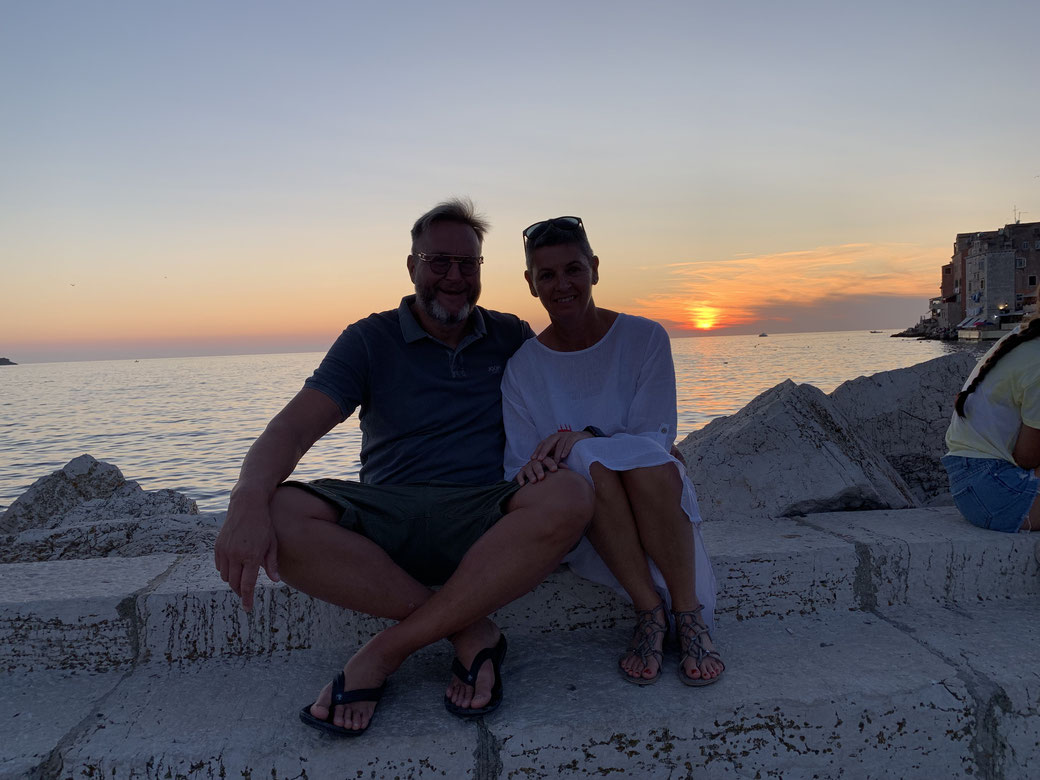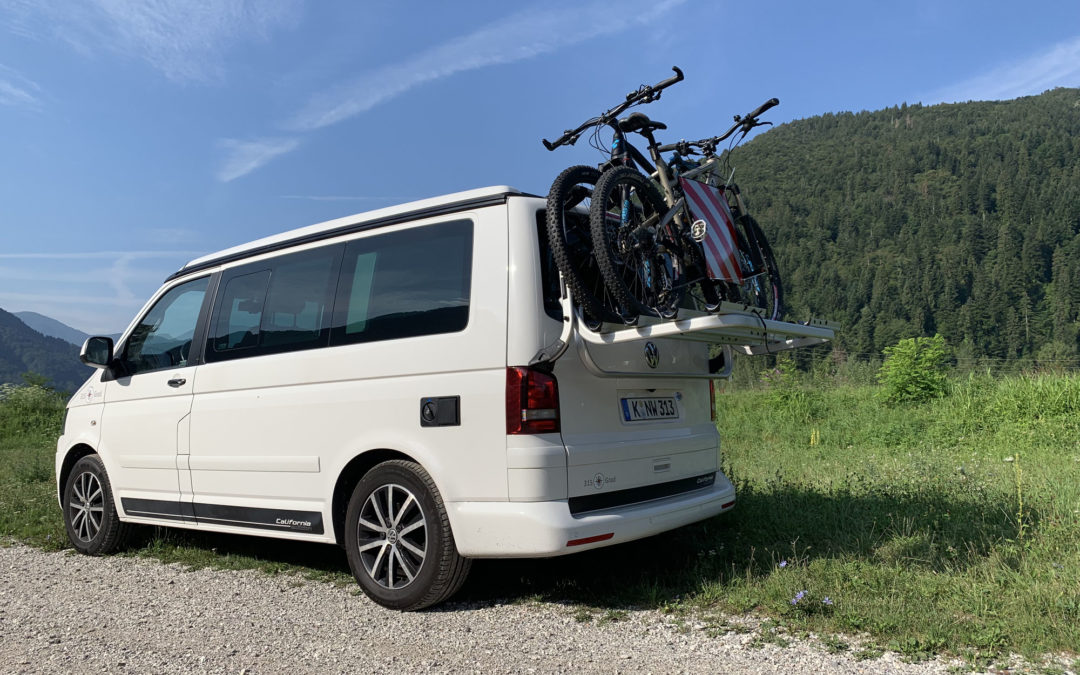Als wir am Morgen aufwachen, ist die Ursache des nächtlichen Dröhnens schnell gefunden. Es ist auch kein Dröhnen, es sind auch keine Turbinen, wie gedacht … – Wir haben unser Nachtquartier einfach direkt neben einem rauschenden Wildwasser-Fluss aufgeschlagen. – Vielleicht war es gut, in der Nacht keine genaue Erkundung durchzuführen. Hier hätte keiner schwimmen wollen. Wir machen uns erst einmal weiter auf. Es ist noch früh, dennoch finden wir einen Mc Donald, der in ein paar Minuten öffnet. – Obwohl wir durch die „Fette Kuh“, aus unserer Sicht Kölns bester Burger-Laden, so verdorben sind, dass wir nie wieder einen Burger beim Megges essen, gönnen wir uns einen Kaffee. Denn der schmeckt hier noch immer. Gestärkt und frisch gewaschen sind wir ein paar Minuten später schon wieder on the Road.
Via Lienz, Oberdrauburg and Mauthen we approach the Plöckenpass road and thus the border between Austria and Italy. - We cross the Carnic Alps and make our first purchase on Italian soil at Tolmezzo. We stop for breakfast at the Tagliamento river. Although we only have a short distance to go through Italy - it's still about 120 kilometers to Trieste - I decide to attach the mandatory Italian warning sign to the bike rack. It's one thing that such a sign is only mandatory in two EU countries. But it's another thing that the version for Italy can hardly be distinguished visually from the version prescribed in Spain. If the wrong one is displayed, there is supposedly still a fine. We have opted for the hopefully safer version. Spain on one side (because that's where we want to go soon) and Italy on the other. Hopefully we won't accidentally turn the sign the wrong way round.
To save on the highway toll sticker required in Slovenia, we let the navigation system calculate an alternative route without the highway. This takes us far through the mountains. The route is longer, but we enjoy it more because of the beautiful landscape.



Around midday we reach our destination for today: Rovinj.
Hector finds a place to stay for the next two nights on a private property. We dismantle the bikes and head towards the beach.
This is located in a wooded park, Punta Corrente, also known as the Golden Cape. - Johann Georg von Hütterott, an Austrian industrialist, bought several islands on the Rovinj coast towards the end of the 19th century with the aim of establishing a climatic health resort. The project was never completed, but the park with its variety of plants was preserved. Today, you can enjoy the sun under pine trees in the semi-shade. We are delighted with the fantastic weather. The water is warm and clear, but still refreshing. The only thing I miss are the many sea urchins I was expecting to see here. But there is an explanation for this. The Croats claim that there are no more sea urchins in the whole of Croatia because the Italian tourists have eaten them all. - Oops!
Zu Rovinj, wo wir zwei weitere Tage bleiben, ist sicherlich schon alles geschrieben.- Ich kann nun verstehen, warum Zoran, mein alter Teamkollege, immer so davon geschwärmt hat. – Die Altstadt ist einfach wunderschön: Die Häuser stehen dicht gedrängt am Wasser der Landzunge. Verwinkelte, mit großformatigem Kopfsteinpflaster belegte Gassen, führen bergauf zur Kirche der Heiligen Euphemia. Deren Turmspitze prägt nicht nur das Stadtbild, sondern auch die vielen Reiseführer, auf der sie abgebildet ist. Auf der Hafenmole finden wir später den perfekten Sitzplatz für den Sonnenuntergang. Danach heißt es speisen. Der Fisch sieht sehr gut aus, doch ich möchte einen Balkanteller. – Neben den vielen netten Restaurants, laden kleine Boutiquen zum shoppen ein. Doch wir finden unsern Abschluss lieber in einer der vielen Eisdielen. Lecker, doch es kommt nicht an „Der Eismacher“, unserere Kölner Eisdiele auf der Severinstraße 53, ran. Man merkt, für Kölner sind Heimatgefühle machmal auch italienisch. – Rovinj hat uns sehr, sehr gut gefallen. Wir behalten aber vor allem die Gastfreundschaft in Erinnerung.



Recent Comments